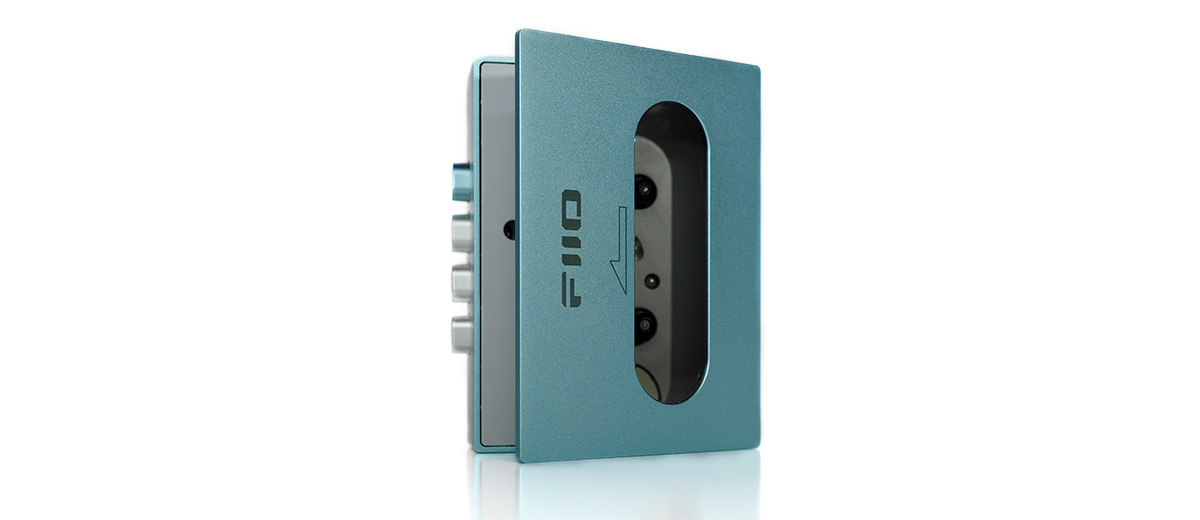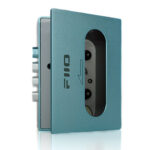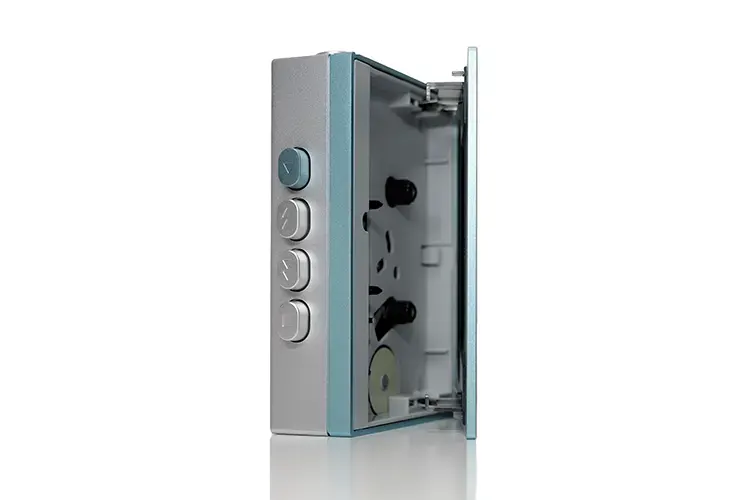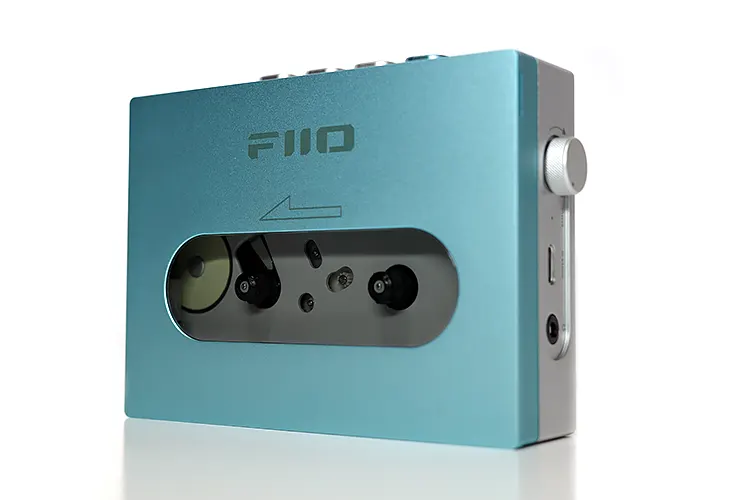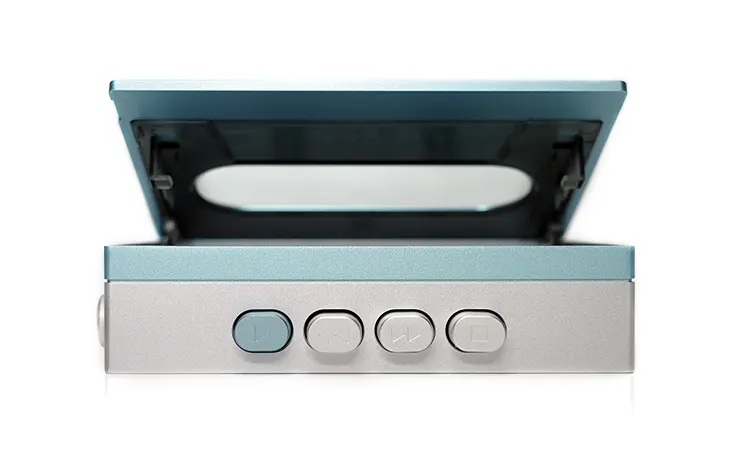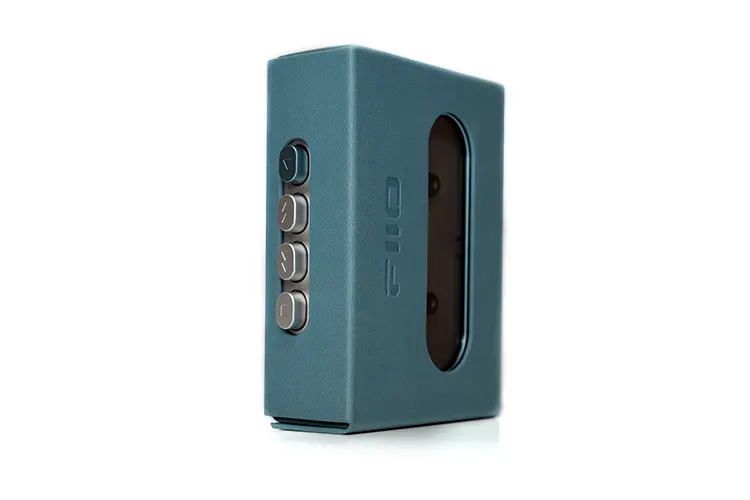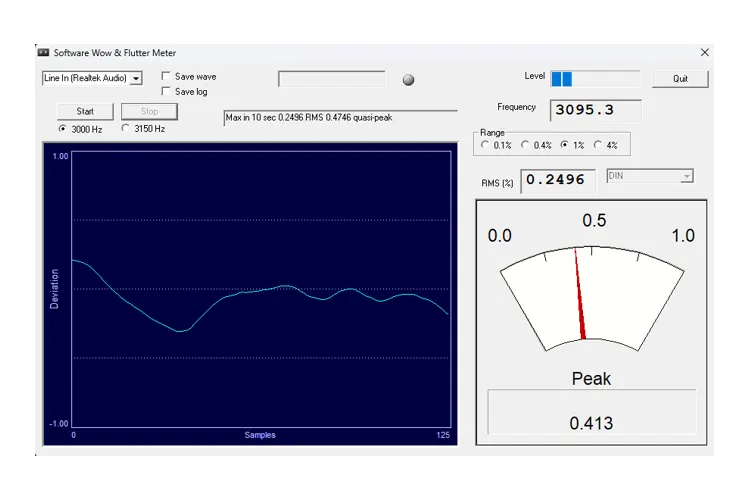In this feature, Lynn reviews the FiiO CP13, which is the company’s first-ever portable stereo cassette player designed for headphone and IEM users. It is priced at $129.99
Disclaimer: This was sent to me as a sample in exchange for my honest opinion. Headfonics is an independent website with no affiliate links or services. I thank FiiO for its support.
You can click here to learn more about the FiiO audio products we have previously assessed on Headfonics.
Note, that this post follows our current scoring guidelines which you can read in more detail here.
Coming off the back of the recent K9 AKM and the JT1 reviews, I am going in a different direction today with FiiO’s first-ever analog portable cassette player, the CP13.
Other companies such as We Are Rewind make a new portable cassette player, with possibly more features, but the CP13 is being marketed as a pure cassette player.
Many of us will remember owning a Sony Walkman, complete with foam-cushioned headphones. We took great pleasure in shaking other’s units, purporting that our unit had a lower wow and flutter (W&F) to our friends.
The truth be told, the vast majority of the units suffered from W&F, and only the very top were mostly immune to that phenomenon.
With the resurgence of cassette players in the youth market, I decided to see how the CP13 stacks up against the classic models and one of its main competitors.
Tech Highlights
The FiiO CP13 uses the same cassette head as the other models out but also has some unique features of its own.
Running a higher voltage motor at 4.2V versus others at 1.8-3.0V allows for better control of the playback with less of an impact on W&F with better control of speed.
Running in tandem with the stabilization circuit, drag on the motor is increased or decreased to maintain proper playing speed.
I ran ‘out of the box’ W&F and speed tests and then the same tests after running the unit through two complete battery operating tests. You can read up on those measurements in more detail on page 2 of this review.
Running the classic JRC5532 low noise dual operational opamp allows for up to 600Ω output drive capability. Known for small voltage swings, while providing excellent power, the JRC5532 is a good choice. A low-jitter clock is used too.
Also, theoretically, you can use your higher-impedance headphones with the CP13. I noted in one user interpretation, that they did use one of their higher impedance headphone models with a modicum of success. I ran the FiiO FT3 350Ω with some success.
A dual-mode power supply allows you to run strictly off of battery or when plugged in. FiiO notes that you can still use the CP13 while charging, too. With battery power of up to 13 hours, you have plenty of listening opportunities.
Head selection ended up being less than 40% of those sent, ensuring quality keeps the heads with the highest measurements. Currently, there is one head manufacturer based in China, so to be picky from that source is a good thing.
Design
Made mostly of aluminum, burnished with powder-coated coloring, the CP13 looks like a Walkman and is slightly more diminutive than the We Are Rewind, (WAR), a modern-day competitor player.
With the classic clamshell lid, FiiO also provides an arrow showing which direction the tape plays. Inserting the tape top down, you close the lid and hit play.
The lid has a very small detent, which allows you to open the unit and insert the cassette. I found it to be a two-handed operation mostly due to the magnetic force and wish that detent was a bit larger.
Using two hands, you can almost open the lid by gripping both sides, but the clamp magnet is strong enough to make it cumbersome at best. A see-through window allows you to view the cassette as it plays.
FiiO now provides three colors and a potential transparent lid color coming in May. The sky blue model sent to me comes across as evenly done, and bright like a sky blue color.
Dimensions of the CP13 are 120mm x 88.3mm x 31.8mm. Weighing 310g, the unit compares to moderately weighted headphones but is markedly heavier than some vintage Walkman models.
Four buttons reside on one side, with the essential play (the same color as the lid assembly), stop, FF, and REW. The CP13 does not record, unlike the WAR.
Controls
On the top are the round volume control knob, which functions quite well with smooth increases or decreases; along with the USB-C charging port (only) and the 3.5mm single-end headphone jack.
With the case on, those are mostly accessible, but I found that the volume knob use was less than ideal.
You can use the unit either on battery alone or connected while charging to the USB-C port. A nice feature.
The CP13 cannot record, nor does it have WiFi or Bluetooth capabilities. FiiO has now come out with tutorials for head alignment and speed adjustment, which is nice. I did not adjust either but will note below any discrepancies.
Battery
On a recent 900+ mile drive each way, I played the CP13 until the battery drained from a full charge. I ensured that the unit was fully charged before leaving each time.
Letting the tape (44 min both sides combined) play until the end, then flipping the tape over, I was able to run the battery test twice, both times at roughly 5/8ths volume.
Each time the cassette made it through almost exactly 12 full runs (24 sides, within a few seconds of ending the last side).
I even checked to see how much was left, and the song being played was within a handful of seconds each time. This equated to 8 hours and 48 minutes each time, well short of the purported 13+ hours.
I am not sure why there was so much of a discrepancy, other than the higher volume listening level.
I will also note that the volume used was higher than I would have comfortably listened to with IEMs, only using that volume level for hard-to-drive headphones such as the FiiO FT3 350Ω, which may or may not have had an effect.
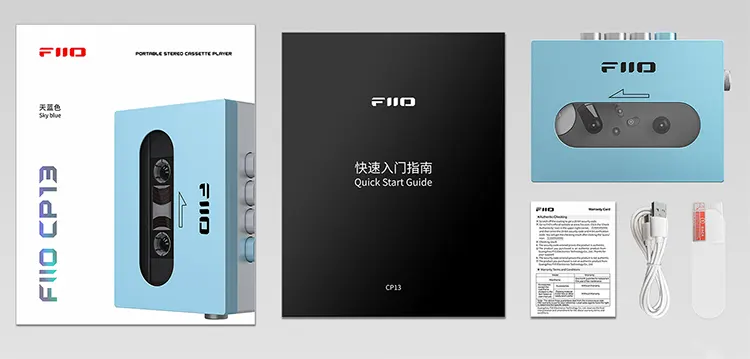
Packaging & Accessories
The CP13 comes in a shiny white box, which when opened allows the open-topped paperboard box with the goodies to slide out.
Tucked into a medium stiff foam insert is the FiiO wrapped in plastic, with another inset holding a rectangular box for the screen protector and charging cable.
I tried applying the screen saver (for the window, which shows the cassette) but failed miserably. I suggest you use it to prevent scratching the window. Also included is a multi-page user manual and warranty card.
Case
Included with mine was a pleather-covered sky-blue case, which fit nicely around the CP13. A magnetic clasp on the top flap allowed access to the unit, while an opening on one end allowed access to the volume knob and headphone jack, and charging port.
The opposite end had another magnetic clasp, which allowed both flaps to be open. I gathered it was for access to changing tapes but found it cumbersome to operate.
It was just as easy to take the unit out and replace the tape as opposed to using the unit inside the case. Especially since the detent for opening the lid was on the other end. To me, the case is for protection only, with functionality running a distant second in the game.
Sound Impressions
Of note is the warning that since it is an analog product, poor recordings and such may exhibit more background hiss than most are used to. Those of us who grew up with cassettes know exactly what they mean.
With no tape bias or Dolby settings, Type I cassettes such as pre-recorded tapes are the recommended format.
Of note, I used pre-recorded cassettes and ones I made from an old Harman Kardon as well as my “newer to me” Nakamichi RX-202 for testing. An SNR of >55 dB is low by today’s standards, but when considering the source tape, not bad.
Summary
On my first listen paired with the FiiO JT1, I found the sound thin, lacking bass and detail. After burning the unit in on my long drive, I did find the sound to be much more pleasant, with good extension on both ends and a moderate increase in the level of detail.
Neither end extended too much, due to the limitations of the cassette mechanism, but I found them to be acceptable using the Shanling MG100 and LETSHUOER Cadenza4.
As expected, the better the tape, the better the sound. That said, quality historical offerings from Sheffield Labs recording sounded quite competent, on par or better with the personally recorded tapes due to recording discrepancies between my recording sources.
The Shanling and LETSHUOER IEMS were used exclusively for IEM testing purposes, and the FiiO FT3 350 ohm for headphone use.
Timbre
The FiiO CP13 comes across as more neutral, but slightly more detailed after burning in the unit for over 30 hours.
Bass reached sub-bass levels, with a depth you would expect, but without significant details present. The upper end came across as smooth and rounded, without much extension.
Neither punctuated nor thin, the treble notes carried on competently but lacked in total vibrancy toward the signature composition.
The sound did not feel as cramped as one might expect on both ends, and the mids, especially vocals carried good clarity to them but lacked micro detail.
While the CP13 can provide adequate compensatory sound listening, the limitations of the cassette medium shone through with the warmish signature but lacking in true detail or depth.
Another compensation to the sound was to push the mids forward, but not up; which affected either end. Warmer instruments in this range came across as engaging with slightly better detail.
Staging & Dynamics
The soundstage was good, with slightly wider sound reaches than high and deep. That lack of depth plays into the thinning and compression of character, but compensation from the near-neutral tonality helps cover this up.
The width helped to separate instruments, especially with busy pieces, which also helped dynamically. Presenting a more vibrant character, as a result, allows the user to define instruments spatially, even on complicated pieces.
In the context of the medium, and technology available, the CP13 did an adequate job of allowing the instruments to shine through in a proper place, with the layers coming across as intertwined; instead of distinct.
Also as expected, the background noise shone through between songs and in quiet passages. Wow and Flutter will be discussed below but note that the same perils we know for lower-end cassette decks are carried through here.
In my opinion, once you get into the music though, this limitation becomes minor.
Measurements
The bane of cassette players is two things: speed and alignment. Speed can lead to the quickening or slowing of material played, while alignment can hinder wow & flutter (W&F).
Another factor is that a tape recorded on one device may sound markedly different on another. Hence the need to gauge W&F using a defined tape, at a defined frequency.
All measurements were made from A.N.T. Audio downloadable software on a Dell Latitude 7290, and a 3.5mm to 3.5mm cable for continuity.
Comparisons were made for the FiiO CP13, We Are Rewind, and two vintage Sony Walkman I own; the WM-FX487 & WM-FX323 (refurbished). The 3000Hz test tape was purchased on eBay.
The CP13 initially played fast to the extent that I read up on how to change the speed. FiiO has thankfully made a tutorial video for both speed and alignment, as others previously have. During my time, I made no adjustments to either speed or alignment, I wanted to test the unit as is.
Speed differentiation using the A.N.T. software is measured in how many “cents” difference from normal. With roughly 1200 cents per octave, a reasonable assumption is that the listener can hear as few as 5 cents difference in speed (hence the saying “you can hear about a nickel’s worth of difference”).
The CP13 was +36% (36 cents), while the WAR was +32% (32 cents), at F#. After running the CP13 for nearly 50 hours, the differentiation turned to -23% (23 cents) at G.
The CP13 W&F compared to the WAR was significantly better (W&F: CP13-peak 0.413%, WAR-peak 0.709%, WM-FX323- peak 0.891%). However, it was bettered by the vintage WM-FX487 at a 0.321% peak.
Click on page 2 below for my recommended pairings and selected comparisons.

